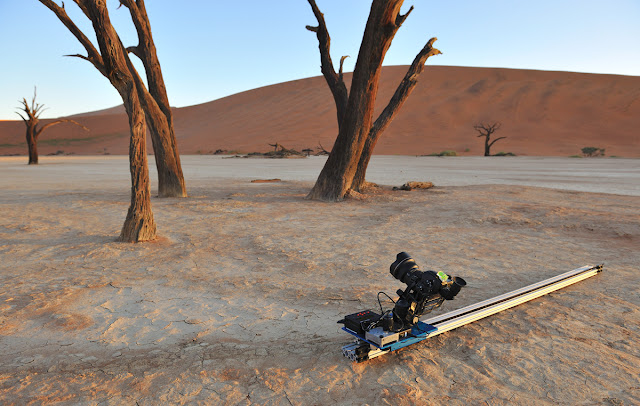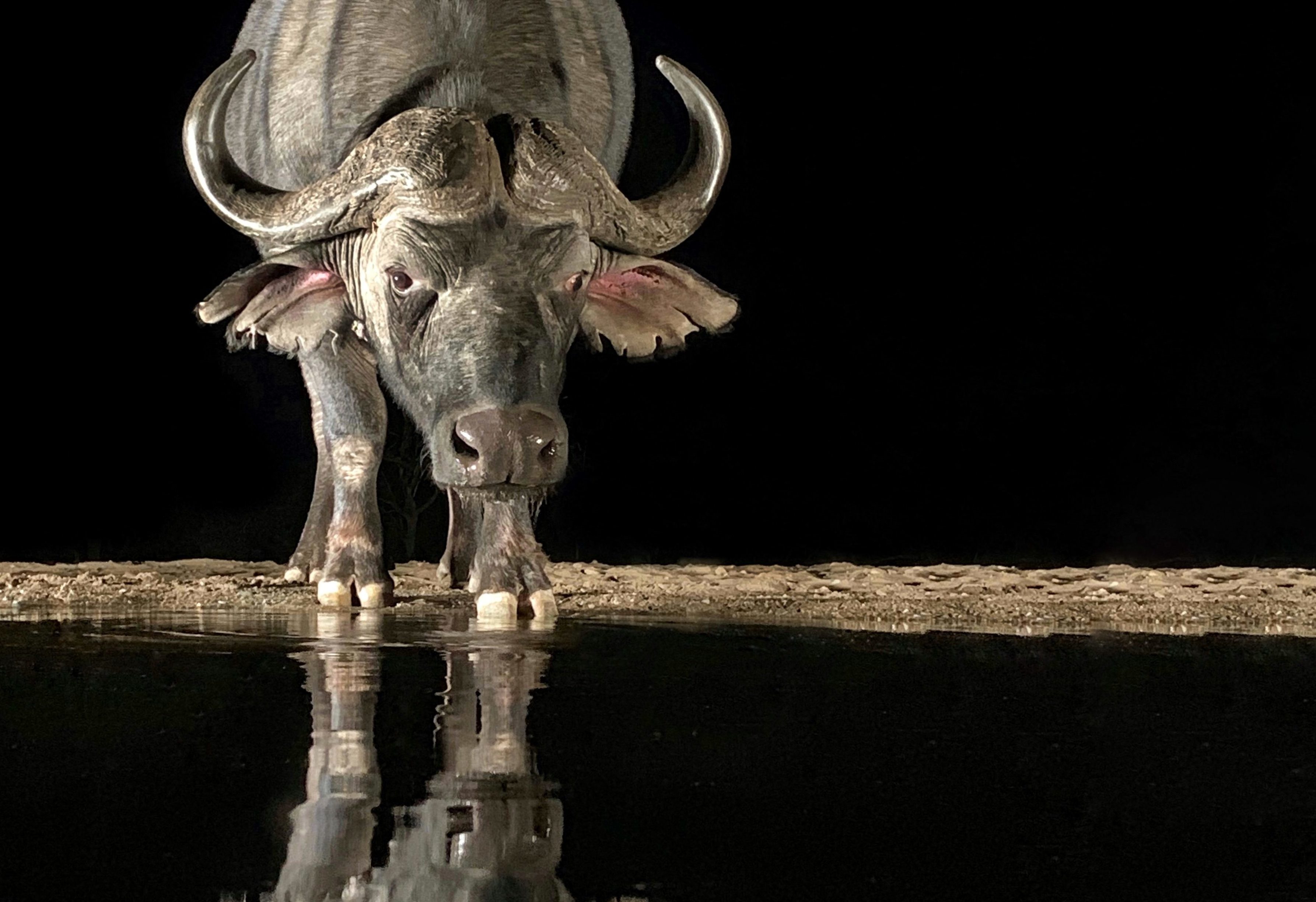Review: Markins Q20 Ballhead
A little bit of history: the M20
Seven years ago I wrote my first review on the Markins M10 ballhead. Shortly after that I upgraded to the M20, and I have been using it ever since. It is still in perfect working condition, and my guess is that it will easily outlive me. From the moment I turned pro a couple of years ago, the M20 has been used and abused almost daily in various ballhead-hostile locations all over the planet.

The Markins M20 on a Gitzo GT3530LSV
Each year in february I lead a photo workshop in Japan, where we photograph in sometimes seriously cold conditions, often with snow, and this is a recipe for disaster with many ballheads. Low temperatures can cause the ball to ‘stick’, turning it into a completely useless metal ornament on top of your tripod. Snow and sleet can make things even worse, but the M20 has never let me down.

No matter how cold it was, the M20 always performed perfectly.
This image of sleeping whooper swans was shot on Hokkaido, Japan, in mid winter.
The M20 kept moving smoothly, my fingers did not.

Bryce Canyon, USA. I know, it looks nice and sunny, and I’m smiling.
Half an hour later I was in my car trying to thaw my painful, near frost-bitten fingers.
The M20 was a lot tougher.
Earlier this year I spent over three months in the Sahara of Northern Africa; Algeria, Chad, Libya and Egypt, and later Namibia. The circumstances there were the exact opposite of those in Japan, and possibly even worse. It may come as no surprise that there is some sand in the Sahara, and photographers don’t like to get it on or in their gear because we know it will cause trouble. But what can you do when there is sand everywhere, there is more dust than oxygen in the air, and when sand storms are a daily routine? With the M20 the answer is simple: you do nothing. Never did I try to protect the head from sand or dust, and it never stopped working. The tolerance in the moving parts is so small and precise, that dust and sand simply cannot get into it. Even after falling in the sand on numerous occasions, or staying outside during a sandstorm, it needed no special attention before using it again. Needless to say that I consider this one of the best investments that I have ever made. So why did I want to get the new Q20? I simply needed a second ballhead to be able to work with different setups.
The Q20
Back in 2004, my Markins ballhead was still quite exotic. Most photographers used the well-known leading brands at the time, and most of them had never heard of Markins nor seen any of their ballheads. A lot has changed since. Serious photographers all over the world now use Markins ballheads, and I regularly see them on my workshops. When I saw the first Q20, my initial response was that it hadn’t changed much – which to me made perfect sense. Why change something that has already proven to be the best in its class? On closer inspection though, I noticed some interesting design changes.

The Markins Q20 on a Gitzo GT3530LSV tripod
The main knob
First, there is the knob. On my M20 the knob is made of metal with very little relief. In normal conditions this works fine, but when you’re photographing with gloves on, the metal knob doesn’t offer enough grip and it is difficult to unscrew and open the clamp. The new design features a slightly larger knob that has a rubber part with ribs, offering way more grip – a serious improvement in terms of handling. But also without gloves the new knob offers more grip, it doesn’t get as cold, and is much easier to open and close.
The clamp
At first, the clamp on the Q20 seemed larger to me than the one on the M20, but on closer inspection they’re the same size. The design has changed a little bit, making it look larger, but it isn’t. The clamp now also features a spirit level. I’m not using this new feature for three reasons. First, most of my cameras have built-in spirit levels. Second, when I’m not using those, I use a small hot shoe mounted spirit level. And third, I don’t really get the placement of the spirit level – it’s right on top of the clamp, where the camera is going to be. That means that you first have to level the clamp, and then mount the camera. This makes very little sense to me, because I like to be able to move the camera around to fine tune my composition so I need to be able to check the spirit level constantly, and I would have to remove the camera from the head in order to do that. It doesn’t bother me that it’s there though, so I just ignore the little green eye.
The clamp is of the dovetail style – in my opinion the most stable connection. Markins offers a large variety of camera plates that will fit the Q20, just make sure you pick the right one for your specific camera body. Personally, I prefer to work with L-brackets. They’re much larger and heavier than regular plates, but they are rock solid and never ever move one bit, they’re much faster when you want to switch from horizontal to vertical and vice versa, they’re better for the stability of the whole setup (you don’t have to flip the head, the camera remains right on top of the center of gravity), and they offer great protection for the camera. I got mine from Kirk, but you can get them from Really Right Stuff as well.

The L-Bracket for the D3 series.
I have two of them, made by Kirk. Much better than regular plates.
Another change I noticed right away, is that the numbers around the base of the head now have little indents. I don’t think it will make much of a difference, but it does look slightly better.
Interesting
When I put the M20 and Q20 next to each other, I noticed something very interesting – they’re a mirror image. I can vaguely remember that you could order the M20 for right handed operation and for left handed, and apparently I have chosen the left handed version. The Q20’s got everything the other way around. It’s funny that I hadn’t really noticed this straight away in the field, and to be honest I don’t really care; I can fasten a knob with my left hand and my right hand.

The Q20 (left) and the M20 (right): mirrored versions

The Q20 with rubber grip and spirit level (left) and the M20 (right)
Numbers
But there’s more – important changes that you can’t see:
-Stronger: the Q20 now offers 250 kgf-cm/217 lbf-in of torque
-Higher load capacity: Measured to be 50kg/110 lbs for a load offset of 5cm/1.97in from the center of gravity
-Lighter: the Q20 weighs only 555 g/1.22 lbs
-More efficient: The load capacity to weight ratio is 90:1
That means the Q20 is no Jaws 2, Terminator 2 or Aliens 2 – it is actually better than version 1.0
In the field
So how did it perform in the field? The first trip that I used the new head on, was our Namibia workshop. Dusty, dry air, and lots of sand. In a desert environment you’ll notice pretty soon if you’re working with professional quality equipment – if not, it will just stop working. The Q20 worked just as I expected. As a matter of fact, I often didn’t even know which head I was shooting with, my trusty M20 or the new Q20. On numerous occasions I crawled through tiny windows in a deserted diamond mining town in the Namib desert, dragging the tripod and the Q20 through the sand. No problems there. As with my Gitzo tripod, I never bothered to clean the head, as it didn’t seem necessary. It’s just great to use gear that you can totally rely on. However, there was this one cold morning that the head started to ‘stick’. It would move smoothly when moving the clamp in large and fast movements, but it would stick when trying to make small adjustments. This was really annoying, because it slowed me down when the light was good and I missed a couple of shots fiddling around with the friction control, trying to get things back to normal again. When I got back home, I realized I hadn’t bothered to read the small leaflet that came with the Q20, which said that I should add some WD-40 to the ball to prevent this from happening. After I had done that, the problem disappeared.

How low can you go? Pretty low with the Q20 flipped sideways,
connected to the vertical part of the L-bracket on my D3s.

Nikon D3s with AF-S 14-24/2.8 on the Markins Q20, mounted on a dolly.
Dust was the prime ingredient here, but the Q20 kept working flawlessly – also after the shoot.
The second big test case was Antarctica. And below freezing temperatures, sea water and snow were just the right circumstances for it. On most of the landings, my camera gear was all packed in my Kiboko camerabag, except for the tripod and Q20. We used zodiacs to transport us from the ship to the shore, and the Gitzo/Markins combo got baptized by the ocean on more than one occasion – the sea can be pretty choppy at times. The M20 could handle salt water pretty well, so I figured the Q20 should be able to deal with it as well. And it did. I have never bothered to get the salt water from my Gitzo and M20, and I haven’t with the Q20 either. It just kept on working after each landing, even during the odd snow storm. The Q20 passed the test.

Antarctica. Salt water is no problem for the Gitzo, icy cold temperatures are no problem for the Q20.

Even the King penguin chicks on South Georgia were very impressed
when they saw the D3 and AF-S 200-400/4.0 VR II mounted on a Q20.
In terms of rigidity and stability, I didn’t notice any differences either. I had brought my 200-400/4 to Antarctica, and with the D3s attached, this is not a light combination. However, with the Q20, setting the right amount of friction takes just a few seconds and it works like a charm. The only thing that’s important when working like this, is to tighten the tripod collar on the lens or you won’t be able to smoothly move the camera/lens combo. And it’s critical to set the right amount of friction, or your combo will flip over and topple the whole tripod. I have used my 600/4 on several occasions with the M20, with and without a Wimberley Sidekick, and I am certain that it will work just as well with the Q20. It might not be ideal, but it works. If space or weight is an issue, it’s nice to know you leave some excess metal at home.
Not so great
What else is there to say about the Q20? Well, in my review on the M10 I wrote that I would like the panning knob to not only have a friction mechanism, but also a locking one. When you attach the head to your tripod a bit too enthusiastically, it can sometimes be very difficult to get it off again, especially in cold weather. You need to tighten the panning knob really hard to be able to unscrew the head from the tripod base, but what often happens is that even a tightened panning knob doesn’t provide enough friction and the entire head just slips on the base of the ballhead. The only way to remove the head from the tripod in those cases is to loosen the screw underneath the base of the tripod with the proper tool. And if you like to pan without loosening the panning knob, you can also experience the exact opposite: you can’t tighten the head to the tripod base more than the friction of the panning knob allows you. This means that the head maybe turn loose as you’re trying to pan without loosening the panning knob. In all these years, this problem is still not solved, even though the panning knob on the Q20 is slightly larger.
It shouldn’t be too difficult or expensive to redesign the panning knob so that it can completely lock the base and prevent it from slipping, by either pushing it in or pulling it out for instance. But apparently it is, because to my knowledge other heads don’t offer this either and have the same issues.
Other than that, not much, really. O, one thing though. My Gitzo tripod got blown over a couple of times on a hike on South Georgia. There were very strong winds, and the lightweight carbon fibre tripod was no match when the camera was not mounted on it. The Q20 got smashed against the rocks several times, and even though it can take a beating, I do seem to have lost the little plastic cover on the main knob. It’s not a big thing because it only has a cosmetic purpose, and I should have paid more attention. It does explain why in the images above the plastic cover is missing from the main knob.
Conclusion
My final conclusion: this is one hell of a ballhead. If you’re using a Markins ballhead already, this won’t come as a surprise. If you’re not, then you should seriously consider at least trying one. They’re incredibly compact, light, smooth and rigid, and extremely reliable. There are many ballheads around to choose from, but few of them get as close to perfection as the Q20.
© Marsel van Oosten


